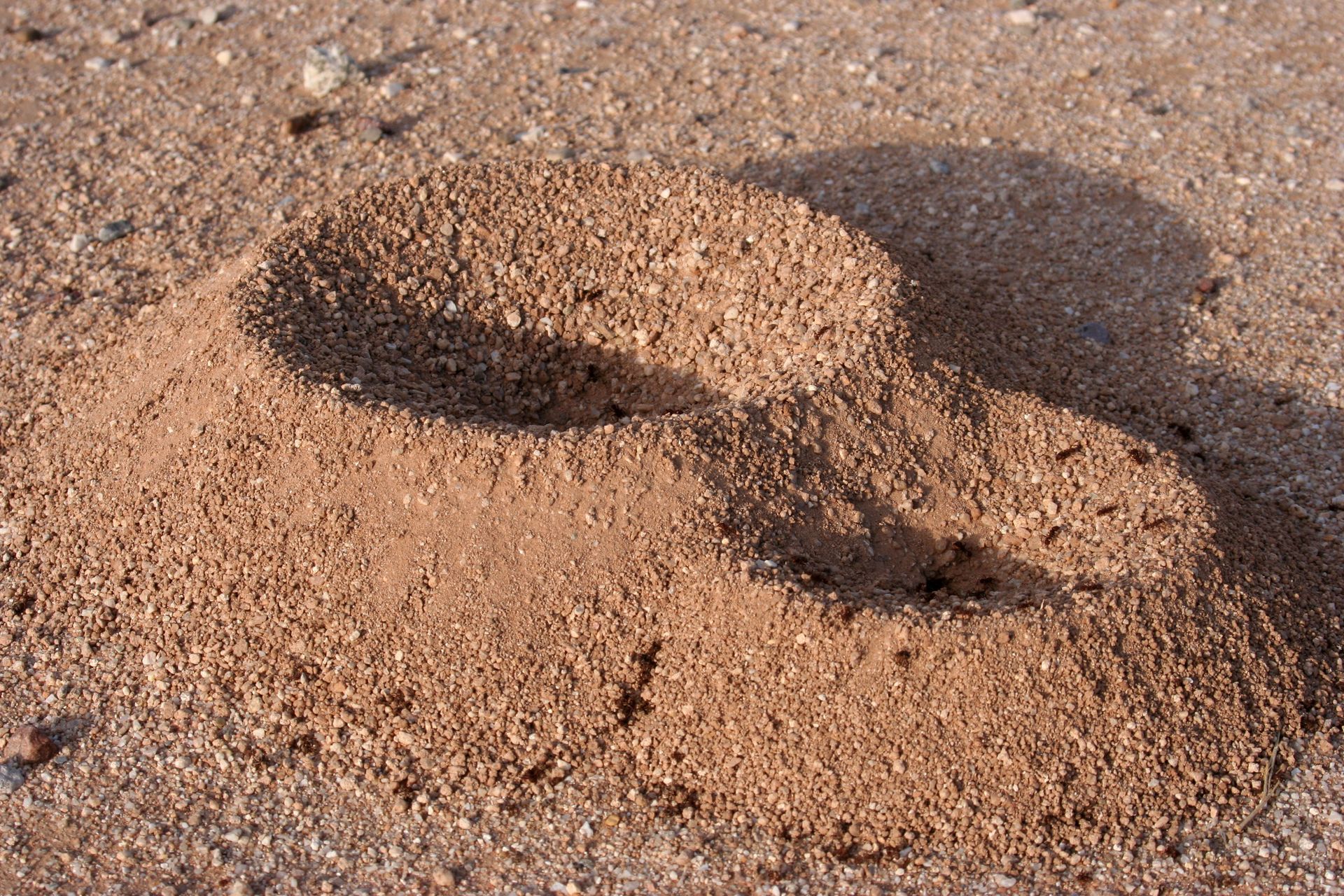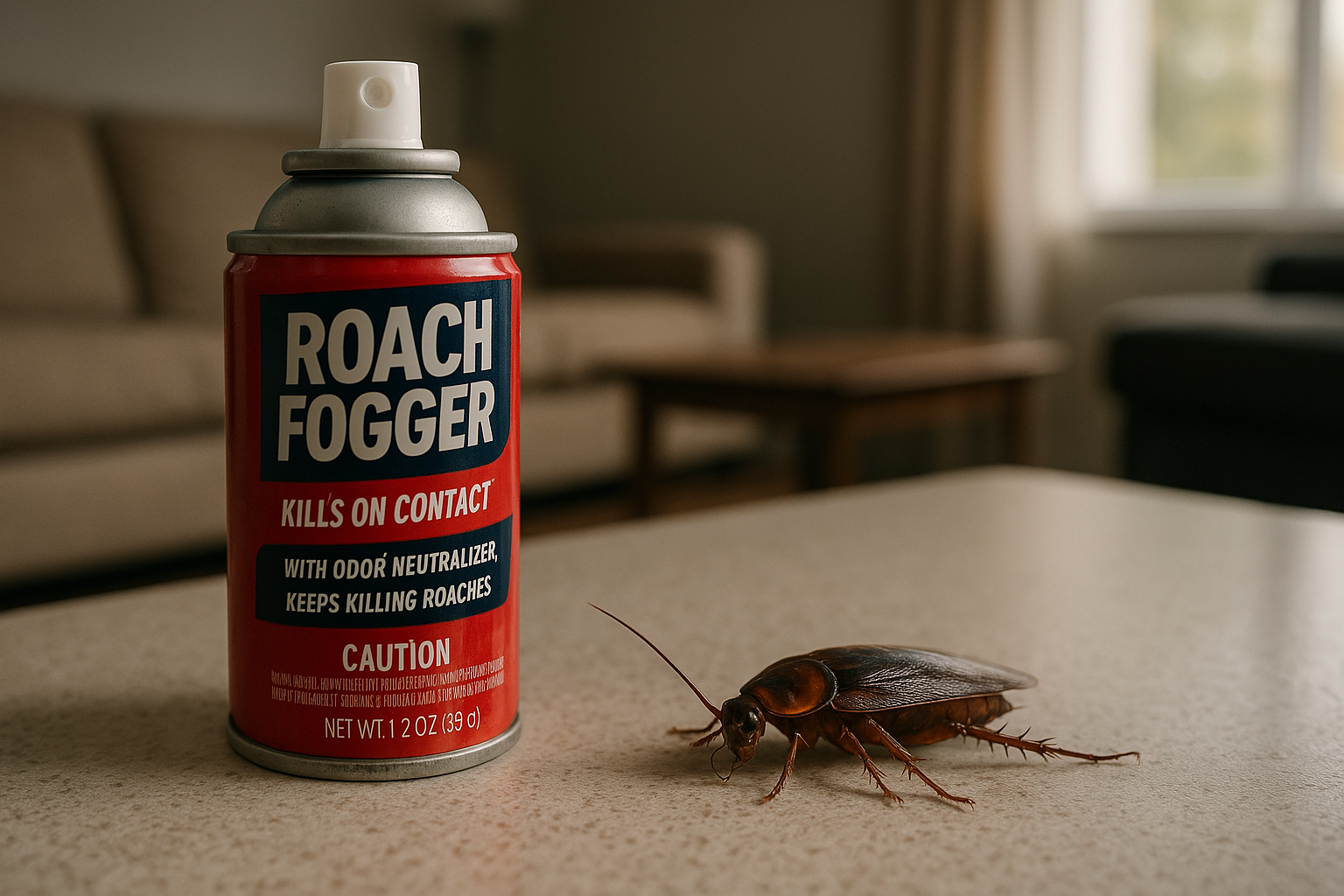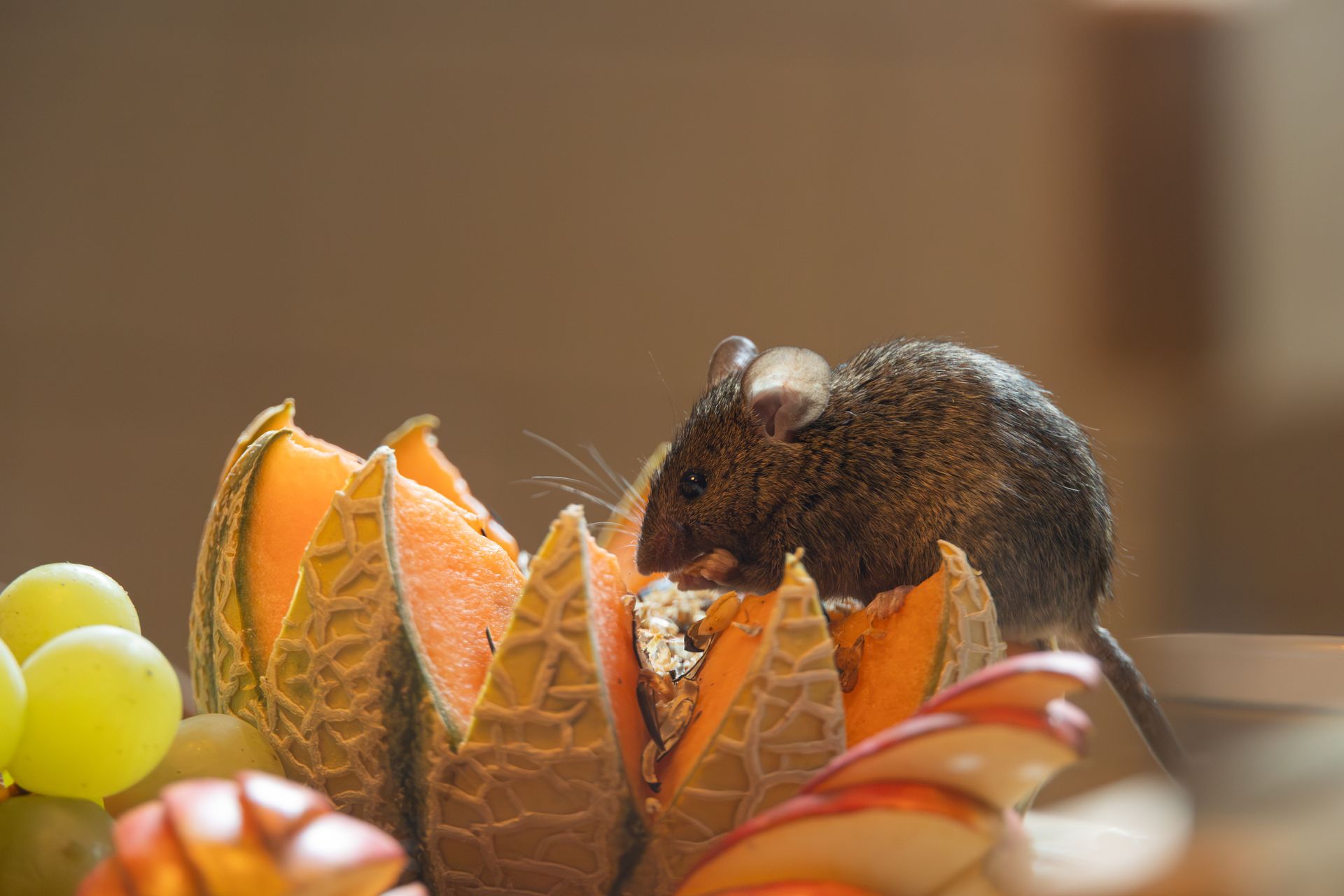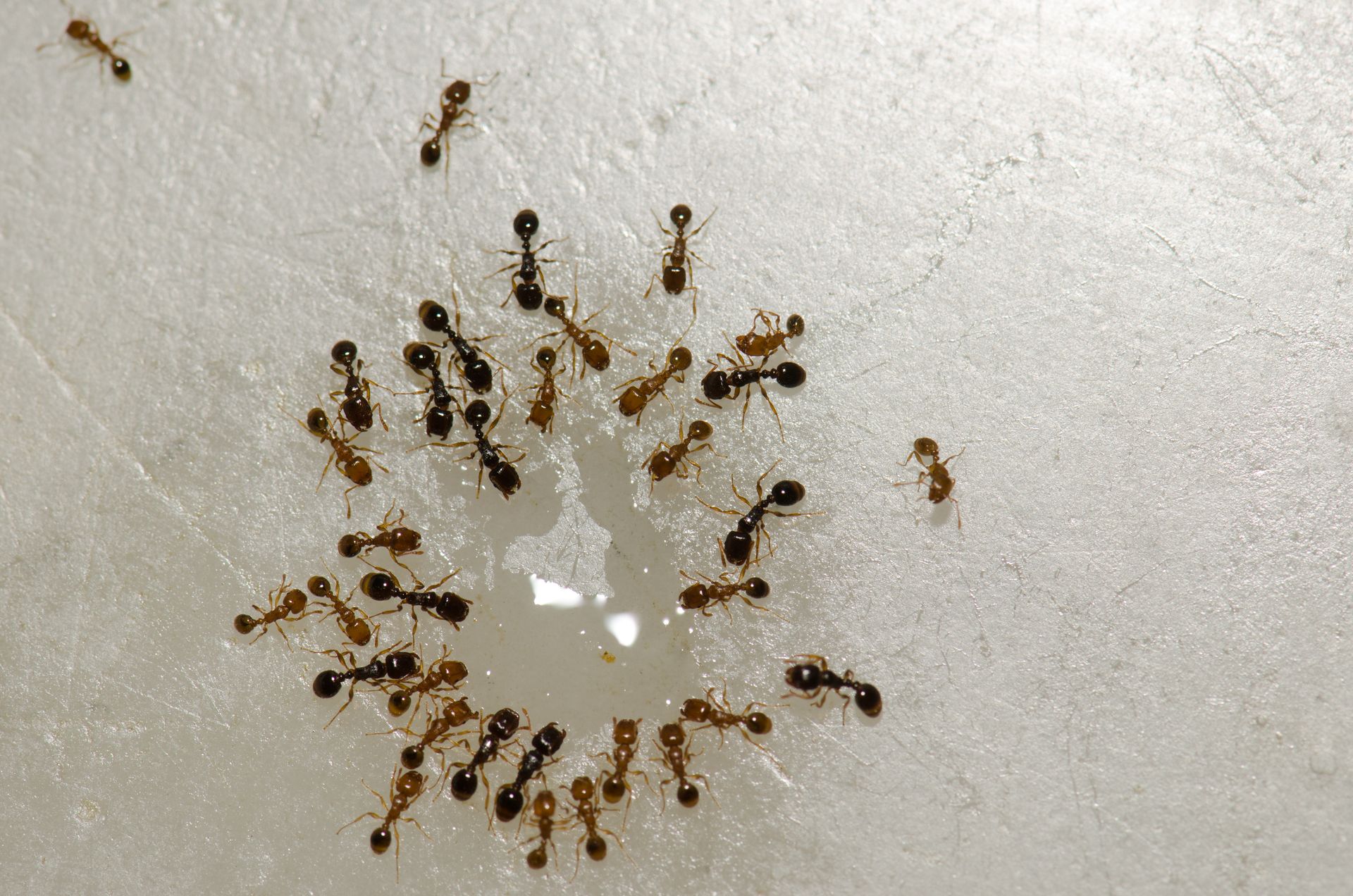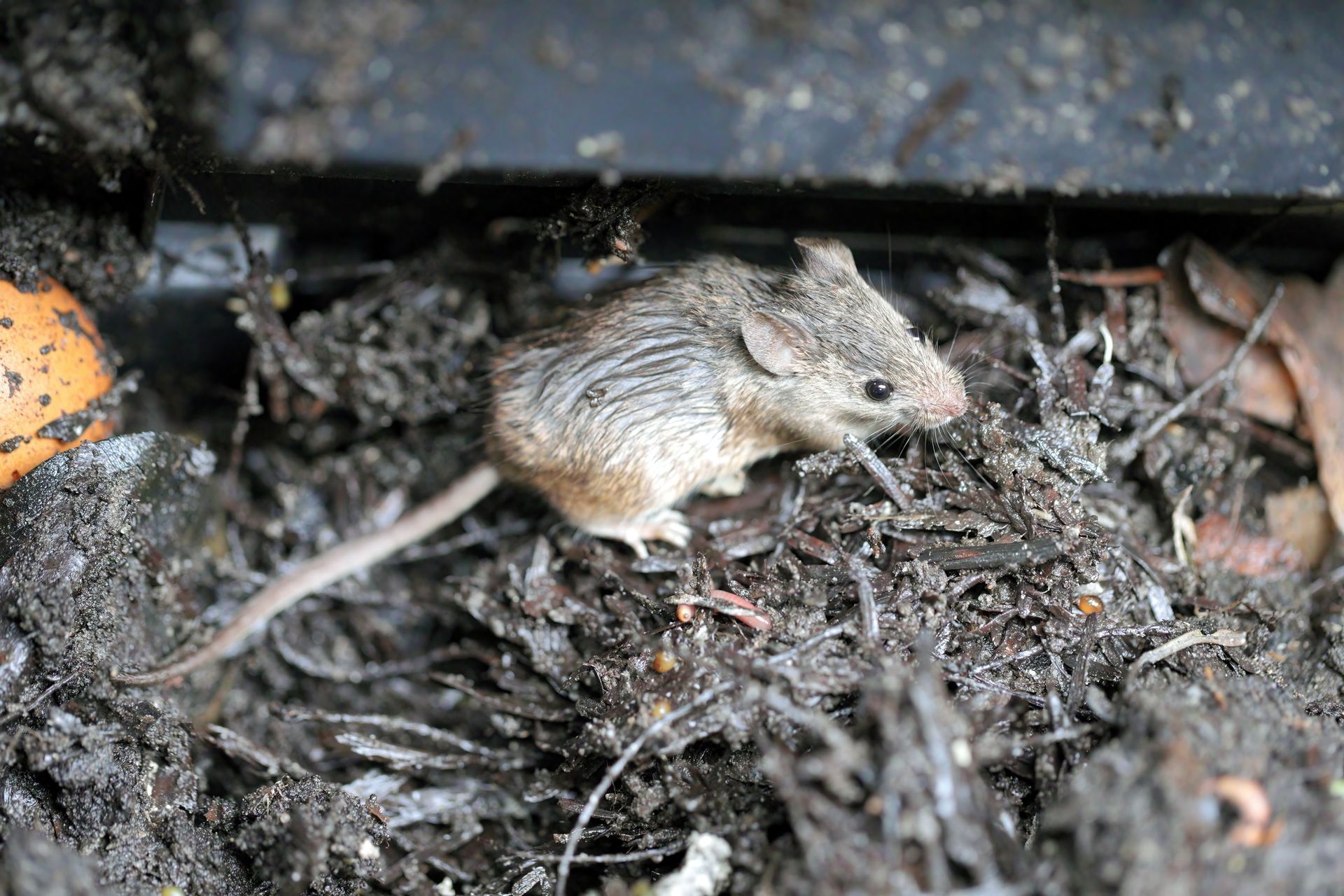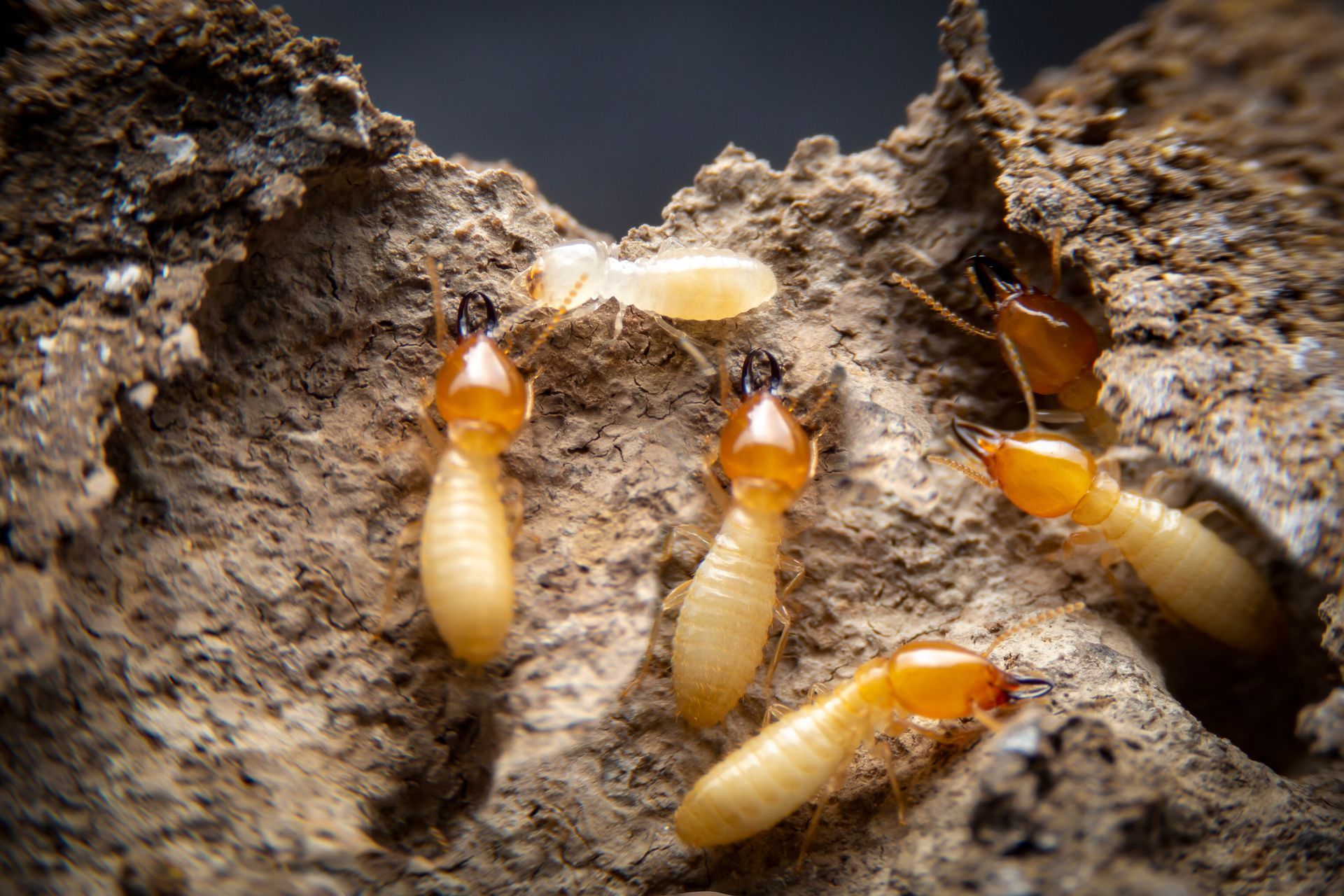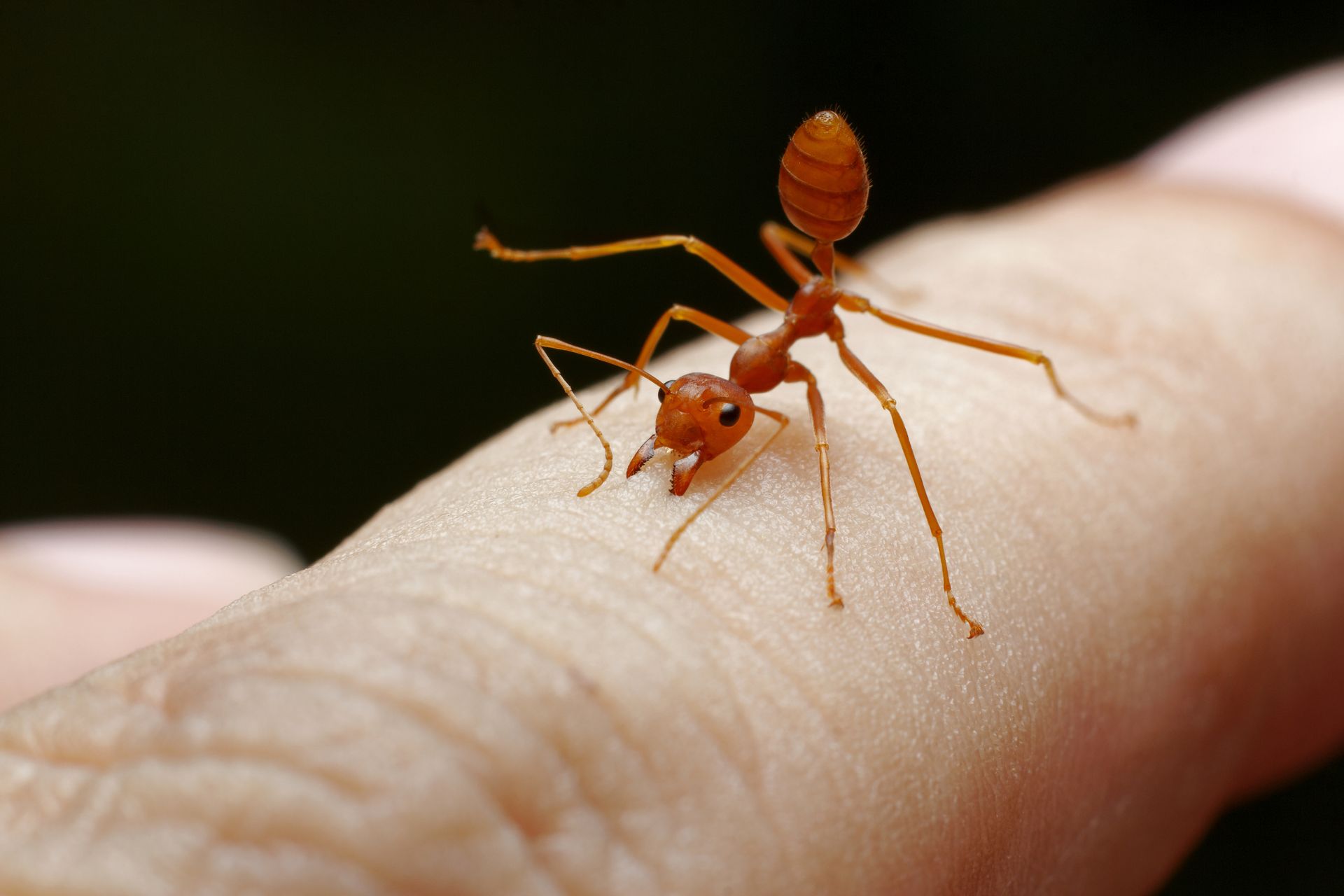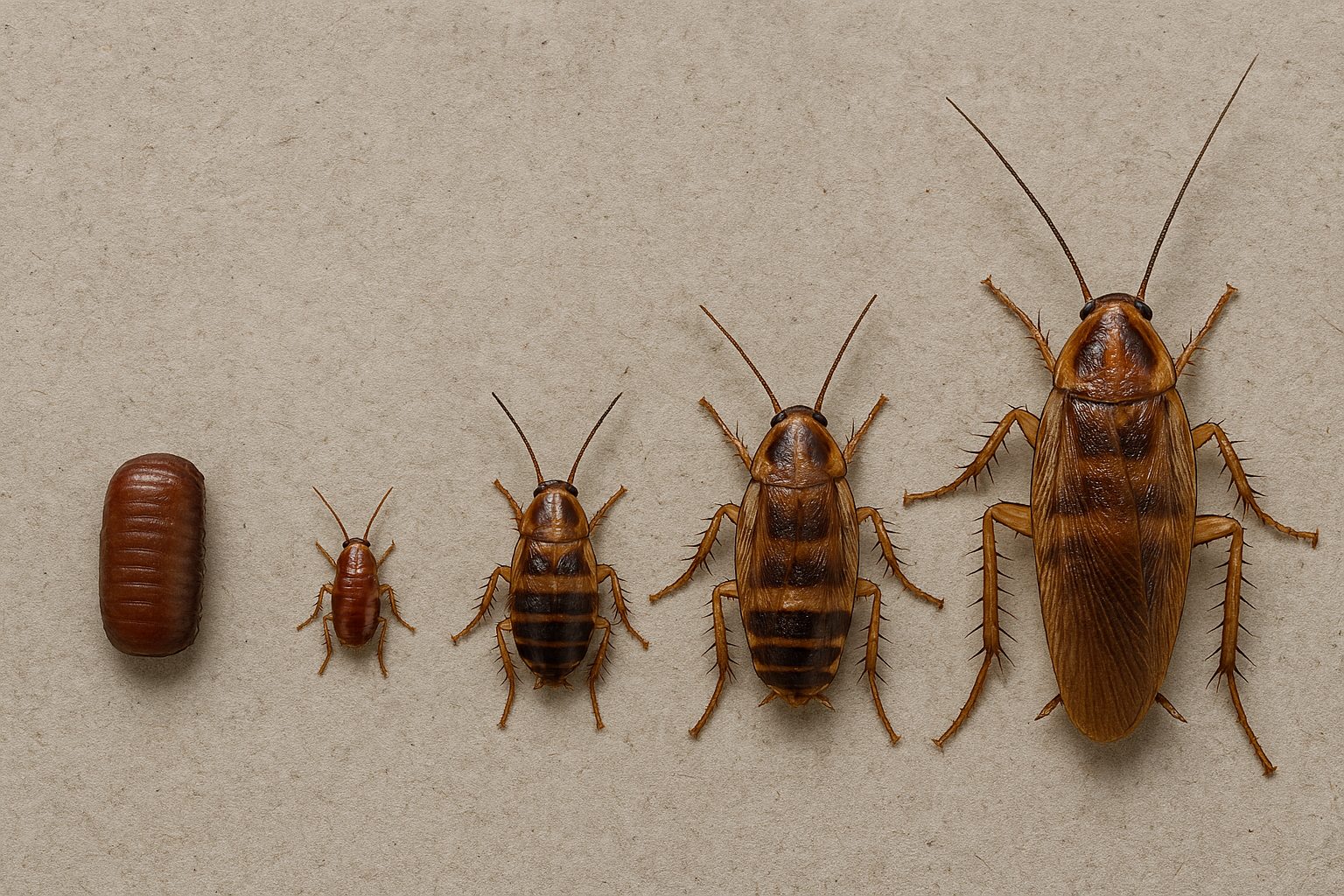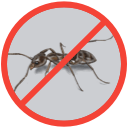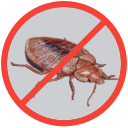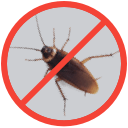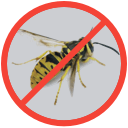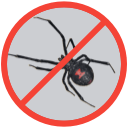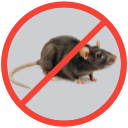German Cockroaches vs American Cockroaches: Key Differences & Control
When unwelcome six legged visitors invade your home, proper identification becomes your first line of defense. Among the 4,500 cockroach species worldwide, two dominate household infestations across the United States: the German cockroach (Blattella germanica) and the American cockroach (Periplaneta americana). Understanding their distinct characteristics, behaviors, and vulnerabilities empowers homeowners to implement targeted control strategies that actually work.
Quick Identification Guide: German vs American Cockroaches
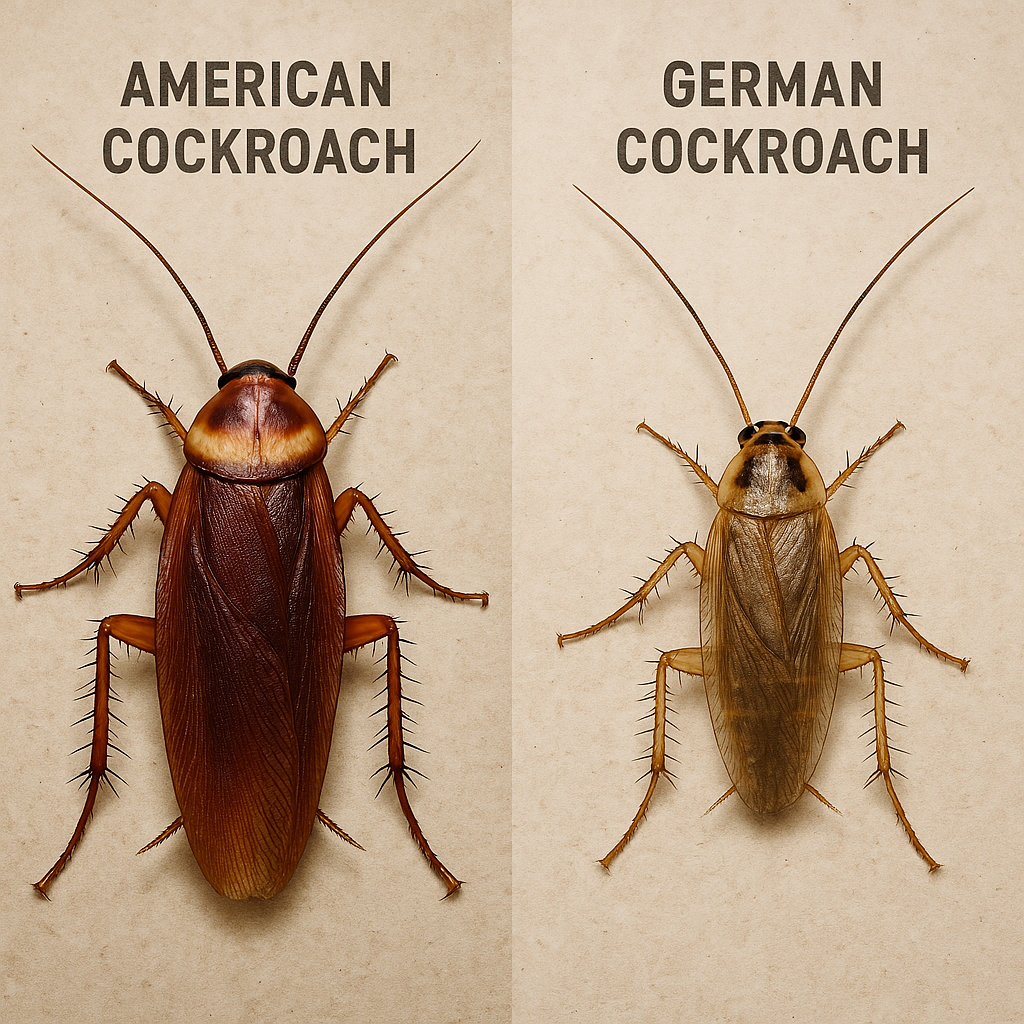
Size Comparison
The most immediate distinguishing feature between these species lies in their dramatic size difference. German cockroaches are generally about a half inch long [1]. Their flattened bodies enable passage through openings barely wider than a dime's edge.
American cockroaches, conversely, rank among the largest peridomestic cockroaches in North America. Adults typically reach 35-40 millimeters (1.4-1.6 inches) in length [2], though exceptional specimens can exceed 50 millimeters (2 inches). This size difference fundamentally shapes their behavior, habitat selection, and vulnerability to control methods.
Color and Markings
German cockroaches sport a tan to light brown coloration with their most distinctive feature: two dark, parallel stripes running longitudinally down their pronotum (the shield like plate behind their head). These stripes, technically called pronotal stripes, remain visible throughout their life cycle, making identification straightforward even for nymphs.
American cockroaches display a rich reddish brown hue with a characteristic yellowish figure eight pattern on their pronotum. This marking, formed by a lighter band around the edge of the pronotum with a darker center, serves as their primary identifying feature. The contrast becomes more pronounced under direct light, appearing almost amber in coloration.
Physical Characteristics Comparison
Body Structure and Shape
The anatomical differences between these species reflect millions of years of evolutionary adaptation. German cockroaches evolved for life in tight spaces, developing a dorsoventrally compressed (flattened) body that enables them to squeeze through extremely narrow crevices. This extreme flattening enables them to exploit crevices inaccessible to larger insects.
American cockroaches maintain a more conventional roach body plan with a less compressed body structure compared to German cockroaches. Their larger spiracles (breathing pores) and more robust tracheal system support their increased oxygen demands. The thoracic segments in American cockroaches also display greater sclerotization (hardening), providing enhanced protection against predators and environmental hazards.
Wing Development
Both species possess fully developed wings as adults, but their flight capabilities differ dramatically. German cockroach wings, while functional, rarely support sustained flight. The wing muscles are insufficient for regular aerial locomotion. They may glide short distances when disturbed but prefer rapid running. American cockroaches on the other hand, possess wings that extend beyond their body length which provide them with functional flight capability.
Body Proportions
German cockroaches possess proportionally longer legs relative to body size, with the hind legs measuring 1.2-1.3 times body length. This adaptation enhances their remarkable running speed.
American cockroaches, despite shorter relative leg length (0.9-1.0 times body length), achieve comparable absolute speeds due to their larger size. Their broader tarsal pads provide superior grip on vertical surfaces, enabling them to climb virtually any texture.
Antennae Differences
Both species utilize antennae as primary sensory organs, housing chemoreceptors, mechanoreceptors, and hygroreceptors. Both species possess well developed olfactory systems adapted to their respective habitats, with American cockroaches utilizing chemical cues in both indoor and outdoor environments.
Nymph Appearance
Color Variations
German cockroach nymphs emerge from eggs nearly white, darkening to tan within hours. Early instars (molting stages) display the characteristic dual stripes, though less prominently than adults. By the third instar, nymphs develop a distinctive dark patch on the thorax between the stripes, sometimes creating a tripartite pattern.
American cockroach nymphs hatch with a distinctive gray-brown coloration, gradually developing the reddish hue through successive molts. Early instars lack the figure eight pattern, instead displaying uniform coloration with slightly lighter margins on thoracic segments.
Development Stages
German cockroaches undergo 5-6 molts before reaching adulthood, with the number influenced by temperature and nutrition [3]. Each molt increases body size by approximately 25%, with the greatest growth occurring between the final nymphal stage and adulthood. The entire process typically requires 40 days under optimal conditions [4] (80°F, 70% relative humidity).
American cockroaches undergo a variable number of molts during development, ranging from 6 to 14 molts depending on environmental conditions. The nymphal development period spans approximately 6-12 months after hatching, though environmental factors can extend this timeframe significantly [5]. This protracted development partially offsets their reproductive potential compared to German cockroaches.
Habitat and Behavior Differences
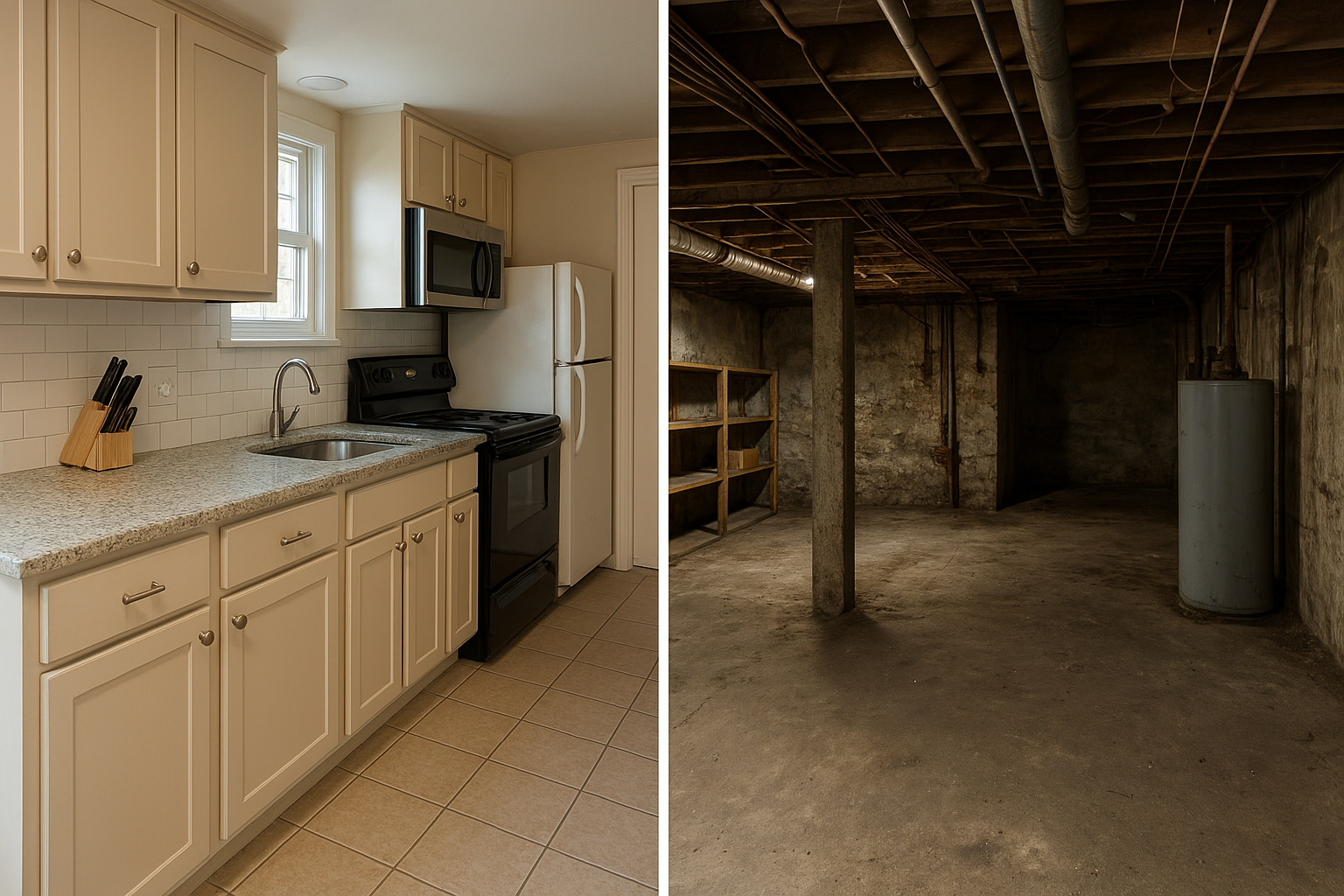
Preferred Living Environments
German Cockroaches: Indoor, Warm, Kitchen/Bathroom Areas
German cockroaches demonstrate extreme habitat specialization for human dwellings. They establish populations exclusively indoors in temperate climates, unable to survive winter temperatures below 15°F (-9°C). Their preferred microhabitats share specific characteristics:
- Temperature range: 75-85°F (24-29°C)
- Relative humidity: 70-80%
- Proximity to water sources (within 12 feet)
- Access to food debris
- Multiple hiding spots with minimal air circulation
Kitchen and bathroom environments provide ideal conditions. They aggregate in response to aggregation pheromones, forming dense colonies in optimal locations.
Kitchen hot spots:
- Refrigerator motor compartments (warmth + vibration protection)
- Dishwasher door seals and control panels
- Microwave vents and clock displays
- Under sink cabinets near water lines
Bathroom refuges:
- Vanity cabinet interiors
- Medicine cabinet backs
- Behind/under toilet tanks
- Pipe penetrations through walls
- Electric outlet boxes in moist areas
American Cockroach: Indoor/Outdoor, Basements, Sewers
American cockroaches exhibit greater habitat flexibility, thriving in both indoor and outdoor environments. They demonstrate true peridomestic behavior, living primarily outdoors but readily invading structures.
Basement/Sewer Presence:
- Basement floor drains and sump pumps
- Crawl space perimeters
- Utility tunnels and pipe chases
- Boiler rooms and mechanical spaces
- Laundry room floor drains
Secondary invasion sites:
- Ground floor bathrooms via plumbing
- Kitchen areas during nighttime foraging
- Garbage rooms and disposal areas
- Loading docks and delivery entrances
Outdoor habitats:
- Storm drains and sewer systems
- Tree holes and palm frond bases
- Commercial steam tunnels
- Landscaping materials (mulch, wood piles)
Unlike German cockroaches, American cockroaches maintain viable outdoor populations year round in southern states. Northern populations depend more heavily on human structures for winter survival, leading to seasonal invasion patterns.
Temperature and Moisture Requirements
German Cockroaches: 70-75°F, High Humidity
German cockroaches exhibit narrow thermal tolerance compared to American cockroaches. Scientific investigations demonstrate peak developmental performance occurs at approximately 87°F (31°C), where survival rates and reproductive success reach maximum levels. Reproductive capability becomes compromised at temperatures below 59°F (15°C) [6]. Mortality occurs within 10 hours when temperatures drop below 45°F (7°C) [7], necessitating their dependence on climate controlled human structures in temperate zones.
Moisture requirements prove equally critical. German cockroaches, like other insects, are susceptible to water loss through their cuticle due to their high surface area to volume ratio. While they demonstrate a preference for humid environments and thrive at humidity levels between 50-70%, they are remarkably adaptable and can survive at normal room temperature and humidity conditions.
American Cockroaches: 80°F+, Damp Conditions
American cockroaches tolerate broader temperature ranges, remaining active between 60-90°F (15-32°C) but they prefer temperatures around 84°F (29°C) [8]. American cockroaches' larger body size provides water balance advantages compared to German cockroaches, but they still require access to moisture and actively seek humid environments above 70% relative humidity.
Activity Patterns
Nocturnal Behavior
Both species exhibit pronounced circadian rhythms controlled by internal biological clocks located in the brain. In cockroaches, locomotor and feeding activity typically begins within the first few hours after darkness onset, with peak activity occurring during the early scotophase (dark period). However, the precise timing of activity peaks varies by species and behavior type, with some activities peaking near the light to dark transition and others occurring 1-3 hours after sunset [9].
Light Sensitivity
German cockroaches possess higher rhodopsin concentrations in their ommatidia, increasing light sensitivity but reducing tolerance to bright illumination. This extreme sensitivity triggers rapid escape responses when lights activate.
American cockroaches demonstrate more variable responses to light, occasionally remaining active in dimly lit conditions. This adaptation suits their partially outdoor lifestyle where complete darkness proves less predictable.
Geographic Distribution and Origins
Native Habitats
German Cockroach: Despite Name, Not from Germany
The German cockroach's name represents one of entomology's great misnomers. Genetic analysis indicates origin in Southeast Asia, likely modern day Myanmar or India [10]. The species spread globally through human commerce, reaching Europe by the 16th century. Carl Linnaeus's 1767 description used specimens from Germany, cementing the misleading common name.
American Cockroach: African/Middle Eastern Origin
Despite their New World name, American cockroaches originated in tropical Africa [11]. Phylogenetic studies place their origins in the Ethiopian highlands, with subsequent spread throughout Africa and the Middle East. They likely reached the Americas aboard slave ships during the 17th century, establishing populations in southern ports.
Wild populations persist across their native range, inhabiting tree bark crevices and caves. This ecological flexibility pre-adapted them for exploiting human environments while maintaining independence from strict indoor living.
Climate Preferences
German cockroaches thrive in stable indoor climates, showing no seasonal population fluctuations in heated buildings. They cannot establish in structures lacking climate control in temperate zones. This dependency on human modified environments shapes their distribution more than natural climate patterns but also allows them to be found in all 50 states.
American cockroaches demonstrate greater climatic adaptability. Southern populations remain active year round, while northern populations enter temperature induced dormancy. They exploit intermediate temperatures in spring and fall for dispersal, leading to seasonal invasion complaints in transitional zones.
Life Cycle and Reproduction Rates
German Cockroach Reproduction
This species focuses reproductive efforts on producing numerous young rather than investing heavily in individual offspring survival. Their reproductive system demonstrates remarkable efficiency:
30-48 Eggs Per Capsule: Females produce oothecae (egg capsules) containing on average 40 eggs [12]. The ootheca measures 7-9mm long and 2-3mm wide, carried by the female until 24 hours before hatching. This maternal care dramatically increases survival rates compared to species that deposit oothecae immediately.
4-8 Capsules Per Lifetime: Under optimal conditions, females produce a new ootheca roughly every 25-40 days [13]. With adult lifespans averaging 140-280 days, total production reaches 5-10 oothecae [14]. Laboratory populations occasionally exceed these values, with records of 12 oothecae from single females.
2 Months to Adulthood: The rapid development cycle enables population explosions. At 80°F (27°C), the complete cycle requires:
- Egg stage: 28 days (within carried ootheca)
- Nymphal development: 40-60 days
Up to 400 Offspring Per Year: Mathematical modeling reveals staggering reproductive potential. A single fertilized female theoretically produces:
- Direct offspring: 120-240 nymphs
- Second generation (assuming 50% females and no mortality): 7,200 – 28,800 individuals
American Cockroach Reproduction
American cockroaches employ a more K-selected strategy, investing greater resources per offspring:
14-16 Eggs Per Capsule: Females produce smaller oothecae containing 14-16 eggs [15]. The capsules measure 8-10mm long but contain fewer, larger eggs than German cockroaches. Each egg receives greater yolk provisioning, supporting extended nymphal development.
Roughly 10 Capsules Per Lifetime: American cockroaches demonstrate lower reproductive rates, producing oothecae every 4-8 weeks. Adult females live on average around 15 months, yielding lifetime production of 7-14 oothecae [16]. Unlike German cockroaches, they deposit oothecae within days of formation in protected locations.
15 Months to Adulthood: The protracted development reflects their larger final size:
- Egg stage: 40-50 days
- Nymphal development: 13-15 months [17]
Up to 800 Offspring Per Year: Despite fewer eggs per capsule, longer adult lifespans enable substantial reproduction:
- Direct offspring: 98-224 nymphs per female
- Second generation (assuming 50% females and no mortality): 4,800 – 25,000
Diet and Feeding Habits
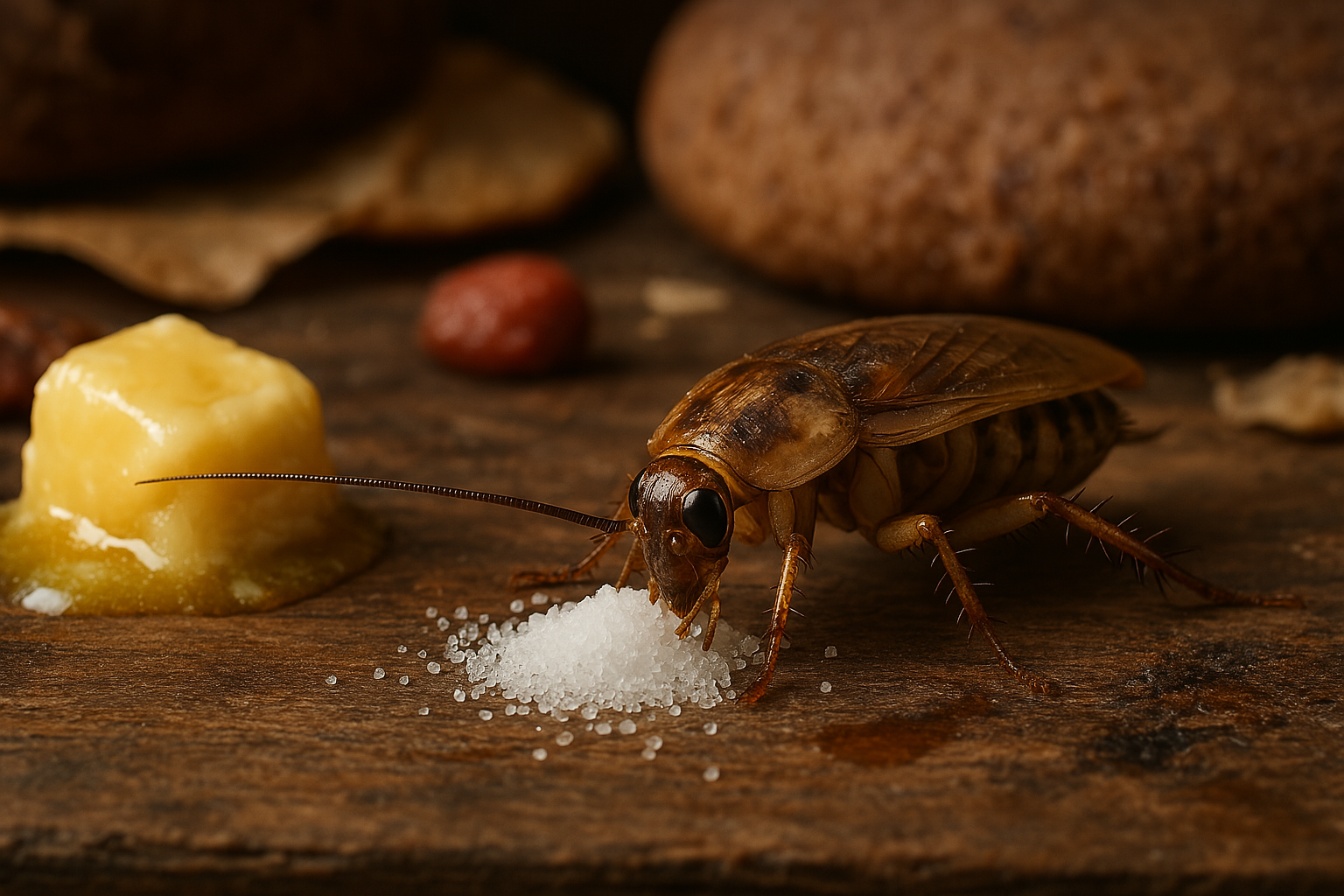
German Cockroach Diet
German cockroaches demonstrate remarkable dietary adaptability despite morphological constraints. They target materials high in moisture and readily digestible carbohydrates. Common food sources include:
- Fresh food residues and grease films
- Fermented materials (beer spills, fermenting fruits)
- Starchy materials softened by moisture
- Pet food (particularly canned varieties)
Preference for Sweets and Grease
Laboratory choice tests reveal strong preferences for foods high in glucose and lipids. German cockroaches detect sugars at concentrations as low as 0.1%, showing particular attraction to:
- Glucose and fructose solutions
- Bakery products and candy residues
- Cooking oils and butter
- Sweetened beverages and syrups
This preference reflects their high metabolic rate and rapid reproduction. Carbohydrates provide quick energy for activity, while lipids support egg production. Females increase lipid consumption 40% during ootheca development.
Book Bindings and Soap
German cockroaches consume non-food items when traditional sources prove scarce. They target materials containing organic compounds:
- Book bindings (drawn by adhesive compounds and paper treatments)
- Wallpaper paste (starch based adhesives)
- Bar soap (fatty acid salts)
- Toothpaste (glycerin and sorbitol content)
- Hair and dead skin cells
These alternative foods cannot sustain populations long term but enable survival during resource shortages. Damage to books and documents often indicates severe infestations where competition forces exploitation of suboptimal resources.
American Cockroach Diet
These large roaches demonstrate adaptable feeding habits, processing nearly all biological matter they encounter. Their powerful mandibles process tough materials. Scanning electron microscopy reveals robust cutting edges and grinding surfaces adapted for mechanical food breakdown.
Their diverse diet includes:
- Plant materials (leaves, bark, seeds)
- Animal proteins (dead insects, meat scraps)
- Fungi and bacterial films
- Fecal matter from various species
- Leather, cloth, and paper products
Decaying Organic Matter
American cockroaches play important ecological roles as decomposers in natural habitats. They show strong attraction to:
- Fermenting plant materials
- Decomposing animal carcasses
- Compost and mulch
- Sewage and organic waste
- Moist, rotting wood
More Versatile Feeders
Their willingness to eat diverse materials gives them survival benefits over pickier species:
- Survival in food scarce environments
- Exploitation of outdoor resources
- Reduced intraspecific competition
- Independence from human food sources
Food Source Competition
When both species occur together, complex competitive interactions emerge. German cockroaches typically dominate high quality food sources through numerical superiority and aggressive behavior. Their smaller size enables access to resources in crevices American cockroaches cannot reach.
American cockroaches compensate through:
- Temporal partitioning (feeding at different times)
- Spatial segregation (occupying different zones)
- Resource partitioning (targeting different foods)
- Interference competition (direct aggression)
Health Risks and Disease Transmission
Common Diseases Spread by Both Species
Cockroaches serve as mechanical vectors for numerous pathogens, transferring microorganisms from contaminated surfaces to food and utensils. Their role in disease transmission stems from their habitat preferences and feeding behaviors.
33 Types of Bacteria
Scientific testing reveals roaches carry dozens of different bacteria types on their bodies, with research confirming over thirty varieties:
- 7 human enteric pathogens
- 12 antibiotic resistant strains
- 5 nosocomial infection agents
- 9 food spoilage organisms
German cockroaches collected from hospitals carry particularly concerning pathogens:
- Klebsiella pneumoniae (pneumonia, UTIs)
- Pseudomonas aeruginosa (opportunistic infections)
- Acinetobacter baumannii (multidrug resistant infections)
- Enterococcus faecalis (endocarditis, bacteremia)
6 Parasitic Worms
Cockroaches serve as intermediate hosts and mechanical vectors for helminth parasites:
- Hymenolepis diminuta (rat tapeworm) - cockroaches ingest eggs, humans infected by accidental ingestion
- Moniliformis moniliformis (thorny headed worm) - develops in cockroach hemocoel
- Enterobius vermicularis (pinworm) - eggs survive passage through cockroach gut
- Ascaris lumbricoides (giant roundworm) - mechanical transmission of eggs
- Trichuris trichiura (whipworm) - eggs remain viable on cockroach surfaces
- Ancylostoma duodenale (hookworm) - immature forms carried on roach legs and bodies
7 Human Pathogens
Beyond bacteria and helminths, cockroaches harbor:
- Entamoeba histolytica - causes amoebic dysentery
- Giardia lamblia - intestinal parasite causing diarrhea
- Poliovirus - remains viable for extended periods on cockroach surfaces
- Hepatitis A virus - spread through physical contact with contaminated surfaces
- Rotavirus - leading cause of childhood diarrhea
- Norwalk virus - epidemic gastroenteritis
- Aspergillus fumigatus - opportunistic fungal pathogen
Allergen Production
Cockroach allergens represent major triggers for allergic disease, particularly in urban environments. The primary allergens include:
Skin Reactions
Direct contact with cockroach debris triggers dermatological responses:
- Contact dermatitis: Red, itchy welts from handling infested materials
- Urticaria: Hives from airborne allergen exposure
- Atopic dermatitis exacerbation: Worsening of existing eczema
- Periorbital edema: Eye swelling from transferred allergens
German cockroaches cause more frequent skin reactions due to higher domestic densities and smaller allergen particles that become easily airborne.
German vs American: Which Poses Greater Health Risk?
While both species present significant health hazards, German cockroaches generally pose greater risks due to:
- Higher population densities: German cockroach infestations produce 10-100 times more individuals per unit area, multiplying pathogen transmission opportunities and allergen production.
- Closer human association: These insects cluster near meal preparation zones and pantries, increasing disease transmission potential. Their preference for operating near food preparation surfaces increases disease transmission probability.
- Greater allergen production: Smaller size enables wider allergen dispersal. German cockroach populations generate 3-5 times more allergen per unit area than equivalent American cockroach infestations.
- Faster population recovery: Rapid reproduction enables quick rebound after incomplete treatment, maintaining chronic exposure risks.
- Developing resistance: German cockroaches evolve insecticide resistance faster due to shorter generation times, complicating control and prolonging exposure periods.
However, American cockroaches present unique risks:
- Sewer association introduces different pathogen profiles
- Larger size causes greater psychological distress
- Flight capability spreads contamination across rooms
- Outdoor foraging imports environmental pathogens
How to Get Rid of Cockroaches
German Cockroach Control Strategies
Gel Baits and IGRs
Current management approaches rely on paste formulations with delayed-effect poisons. Effective formulations include:
Gel bait active ingredients:
- Fipronil (0.01-0.05%): This compound interferes with insect nervous system functions at minimal concentrations
- Indoxacarb (0.6%): Sodium channel blocker activated by cockroach metabolism
- Clothianidin (1.0%): Neonicotinoid affecting nicotinic acetylcholine receptors
- Dinotefuran (0.5%): Rapid acting neonicotinoid
Insect Growth Regulators complement gel baits by disrupting reproduction:
- Hydroprene: Juvenile hormone analog preventing adult emergence
- Pyriproxyfen: More stable JHA affecting multiple life stages
- Novaluron: Chitin synthesis inhibitor causing molting failure
Gel bait advantages:
- Cockroaches consume and share through coprophagy and necrophagy
- Delayed mortality enables return to harborage before death
- Secondary kill through consumption of poisoned individuals
- Minimal environmental contamination
- Targeted application reduces pesticide exposure
IGR effects manifest slowly but provide long term population suppression. Combining gel baits with IGRs accelerates colony elimination by simultaneously killing adults and preventing recruitment.
Crack and Crevice Treatment
Precision application techniques maximize German cockroach control:
Application sites (in order of importance):
- Behind/under appliances
- Cabinet hinges and corners
- Electrical boxes and switch plates
- Pipe penetrations and escutcheons
- Door frames and moldings
- Drawer slides and supports
Pesticide placement specifications:
- Spot size: 3-6mm diameter (pea sized)
- Spacing: 30-45cm apart in light infestations, 15-30cm in heavy
- Quantity: 0.5-1.0g per square meter
- Height: Within 5cm of surfaces where possible
- Frequency: Reapplication every 2-4 weeks until elimination
Research demonstrates 95% population reduction within 2-3 weeks using proper gel bait placement. Success requires thorough coverage of all potential harborages.
Multiple Treatment Rounds
German cockroach biology necessitates sustained treatment. An appropriate treatment schedule looks like:
- Initial service: Comprehensive gel bait application
- 2-week follow up: Monitor and rebait active areas
- 4-week service: Address surviving populations
- 6-week check: Verify elimination, treat stragglers
- 8-week final: Confirm eradication
Oothecae protection requires extended programs. Eggs within carried capsules resist insecticides, hatching after initial treatments. Successful programs maintain lethal residues through multiple generation cycles.
American Cockroach Control Strategies
Perimeter Treatments
Managing larger roaches focuses on blocking entry points and establishing protective barriers:
Exterior treatment zones:
- Foundation perimeter (1 meter up, 3 meters out)
- Door and window frames
- Utility penetrations
- Vent openings and weep holes
- Exterior drains and cleanouts
- Landscape features harboring cockroaches
Effective perimeter products:
- Microencapsulated formulations (extended residual)
- Wettable powders (rain resistance)
- Granular baits (mulch bed treatment)
- Dust formulations (void treatment)
Quarterly perimeter treatments reduce American cockroach invasions by 80-90% in conducive environments.
Outdoor Focus
American cockroach source reduction targets exterior populations:
Habitat modification:
- Remove leaf litter within 3 meters of structures
- Eliminate wood piles and construction debris
- Trim vegetation contacting buildings
- Replace organic mulch with inorganic alternatives near foundations
- Clean storm drains and catch basins seasonally
- Remove pet feces and spilled pet food daily
Targeted outdoor treatments:
- Inject foam formulations into tree holes
- Treat expansion joints with dust formulations
- Apply granular baits to mulch beds
- Spray sewer manholes with microencapsulated products
- Dust crawl spaces with desiccant formulations
Why Different Approaches Are Needed
Species specific biology drives control strategy differences:
German cockroaches require intensive indoor focus because:
- Entire life cycle occurs indoors
- Rapid reproduction demands sustained pressure
- Small size enables hiding in tiny spaces
- Gel bait acceptance facilitates colony elimination
- Resistance development necessitates rotation
American cockroaches need perimeter emphasis because:
- Outdoor populations serve as invasion sources
- Larger size simplifies exclusion
- Moisture dependence enables environmental modification
- Slower reproduction allows intervention windows
- Diverse habitats require comprehensive approaches
Understanding these biological differences enables pest professionals to design targeted programs maximizing efficacy while minimizing pesticide use.
How to Prevent Cockroaches
Sealing Entry Points
Both species exploit structural vulnerabilities, though target openings differ by size:
Universal sealing priorities:
- Pipe penetrations through walls/floors (use escutcheon plates + sealant)
- Electrical conduit entries (foam or fire rated caulk)
- HVAC penetrations (sheet metal + sealant)
- Door frames (weatherstripping + door sweeps)
- Window frames (caulk + weatherstripping)
- Foundation cracks (hydraulic cement or polyurethane sealant)
Material selection criteria:
- Flexibility to accommodate building movement
- Adhesion to dissimilar substrates
- Pest resistance (avoid pure latex caulks)
- Longevity (10+ year rated products)
- Fire rating where required by code
German cockroaches require sealing gaps >2mm, while American cockroaches need >6mm gaps addressed.
Eliminating Food Sources
Comprehensive food denial strategies impact both species:
Storage protocols:
- Transfer dry goods to sealed containers within 24 hours
- Store pet food in metal or thick plastic bins
- Refrigerate fruit and compost materials
- Select waste containers that seal completely when closed
- Empty indoor trash nightly
- Clean recycling before storage
Cleaning schedules:
- Each day: Clean food surfaces, remove floor debris, eliminate dirty cookware
- Weekly: Clean under appliances, empty toaster crumbs
- Monthly: Deep clean cabinets, degrease surfaces
- Quarterly: Professional kitchen equipment cleaning
Overlooked food sources:
- Grease accumulation on range hoods
- Crumbs in furniture cushions
- Pet food scattered under bowls
- Beverage residues in recycling
- Soap scum in drains
- Food debris in dishwasher door seals
Moisture Control
Water management prevents both species establishment:
- Maintain indoor relative humidity 30-50%
- Fix leaks within 48 hours of detection
- Insulate cold water pipes preventing condensation
- Ventilate bathrooms during/after showers
- Empty appliance drip pans weekly
- Seal grout preventing water infiltration
Regular Inspections
Proactive monitoring enables early intervention:
Inspection frequency:
- High risk areas: Weekly visual checks
- Moderate risk zones: Bi-weekly examination
- Low risk spaces: Monthly inspection
- Professional inspection: Quarterly or bi-annually
Inspection tools:
- LED flashlight with red filter (less disturbing to cockroaches)
- Inspection mirror for viewing hidden areas
- Flushing agent (aerosol pyrethrin) revealing populations
- Sticky traps for population monitoring
- Smartphone for photo documentation
Documentation practices:
- Record sighting locations, numbers, and life stages
- Map problem areas for targeted treatment
- Track population trends over time
- Note sanitation and structural issues
- Share findings with pest professionals
Sanitation Best Practices
Effective sanitation transcends basic cleaning and requires systematic approaches at different intervals.
- Professional grade protocols begin with daily procedures that form the foundation of cockroach prevention. These include sanitizing all food contact surfaces with EPA registered disinfectants, detail cleaning equipment crevices with specialized brushes to remove hidden food particles, and mopping floors with commercial degreasing solutions that eliminate the greasy films cockroaches find attractive. Daily sanitation also demands emptying and sanitizing trash receptacles to prevent odor accumulation and cleaning floor drains with enzyme cleaners that break down organic matter where cockroaches often feed.
- Weekly deep cleaning addresses areas that daily maintenance might miss. This involves moving appliances to clean underneath where German cockroaches particularly like to hide, degreasing exhaust hoods and filters where cooking residues accumulate, and steam cleaning floor seams and crevices that can harbor both food debris and cockroach eggs. Trash can storage areas require special attention with sanitization to eliminate odors that attract American cockroaches from outdoor locations, while refrigerator door seals need detailed cleaning to remove food particles and moisture that create ideal German cockroach habitats.
- Monthly intensive cleaning tackles the deeper sanitation needs that prevent long term establishment of cockroach populations. This includes emptying and thoroughly cleaning inside cabinets where crumbs accumulate over time, disassembling and cleaning appliance components that may harbor hidden colonies, and power washing exterior trash areas that can attract American cockroaches. Ceiling tiles and light fixtures often collect grease and debris in commercial settings, requiring monthly attention, while grease trap servicing prevents the buildup of materials that sustain large cockroach populations.
Maintaining these professional standards requires specific sanitation supplies that go beyond household cleaners. Enzymatic drain cleaners break down organic matter more effectively than standard products, while commercial degreasing agents remove the stubborn films that attract cockroaches. Microfiber cloths reduce chemical use while improving cleaning efficiency, and HEPA vacuums ensure complete removal of debris and allergens. Steam cleaners provide chemical free sanitation for sensitive areas, while UV sanitizing wands offer additional disinfection for locations where traditional cleaning proves difficult.
Combining physical exclusion, environmental modification, and rigorous sanitation creates inhospitable conditions for both cockroach species while minimizing reliance on chemical controls.
DIY vs Professional Control
Limited infestations may respond to diligent DIY efforts when caught early and approached systematically. DIY control proves most effective in specific scenarios: single American cockroach sightings without evidence of establishment, minor German cockroach activity confined to one room, or recent introductions showing no signs of reproduction. These methods also work well for preventive treatments in low risk situations and for supplementing professional services between scheduled visits.
Effective DIY strategies differ significantly between species due to their unique behaviors and habitats. For German cockroaches, success depends on a multi-pronged approach combining consumer gel baits with rotating active ingredients to prevent resistance, strategic sticky trap placement for population monitoring, and intensive sanitation to eliminate food sources. Moisture elimination and clutter reduction prove equally critical, as these modifications remove the conditions German cockroaches need to thrive.
American cockroach DIY control requires a different focus, emphasizing:
- Perimeter granular baits to intercept outdoor populations
- Installation of exclusion materials at entry points
- Outdoor habitat modification to reduce harborage
- Drain treatments targeting sewer connections
- Comprehensive moisture control throughout the property
DIY success hinges on several critical factors that determine whether self treatment can effectively resolve the problem. Early detection before population establishment gives homeowners the best chance of success, but this must be paired with commitment to sustained effort over several weeks or months. Those willing to address root causes like sanitation and moisture issues, maintain realistic expectations about results, and invest time in proper product selection and application techniques see the best outcomes from DIY approaches.
What Professionals Offer
Integrated Pest Management
Professional IPM programs combine multiple strategies into comprehensive solutions that address immediate infestations while preventing future problems. The inspection and monitoring phase provides the foundation for successful treatment through comprehensive facility assessment, accurate species identification, and population density estimation. When needed, professionals conduct resistance testing to ensure product effectiveness and document all conducive conditions contributing to the infestation.
Environmental modifications form the second pillar of professional IPM programs. Experts develop detailed exclusion plans targeting all potential entry points, identify hidden moisture sources DIY inspections often miss, and create customized sanitation protocols for specific situations. They also provide habitat modification recommendations and prioritize structural repairs based on their impact on pest pressure.
Professional targeted treatments utilize:
- Restricted use products unavailable to consumers
- Strategic rotation preventing resistance development
- Precision application equipment ensuring optimal placement
- Specialized void treatments reaching inaccessible areas
- Techniques minimizing environmental impact
Documentation and communication complete the professional service package, providing detailed service reports tracking progress over time, trend analysis revealing seasonal patterns, and client education materials promoting long term prevention. Regulatory compliance records prove essential for commercial clients, while warranty provisions offer peace of mind that DIY methods cannot match.
Targeted Treatments
Professionals employ sophisticated treatment strategies:
Advanced products:
- Restricted use pesticides
- Non repellent formulations
- Extended residual products
- Combination formulations
- Novel active ingredients
Specialized equipment:
- Ultra-low volume applicators
- Dust applicators for voids
- Injection systems for precise placement
- Foaming equipment for drains
- Heat treatment units
Application expertise:
- Crack and crevice precision
- Void treatment techniques
- Rotation strategies preventing resistance
- Minimal exposure application
- Targeted rather than broadcast treatment
Follow Up Services
Professional programs include systematic follow up:
Service intervals:
- Initial intensive treatment
- 2-week follow up (German cockroaches)
- 4-week follow up (American cockroaches)
- Monthly services until elimination
- Quarterly prevention thereafter
Follow up components:
- Population monitoring assessment
- Treatment efficacy evaluation
- Reapplication as needed
- Sanitation compliance check
- Exclusion recommendation updates
Value added services:
- Emergency callback provisions
- Service guarantees/warranties
- Educational resources
- Regulatory compliance assistance
- Documentation for sensitive accounts
Professional services prove cost effective when considering:
- Product costs for extended DIY attempts
- Time investment required
- Health risks from continued exposure
- Property damage from infestations
- Peace of mind from guaranteed results
Contact EcoGuard for Expert Cockroach Control
Don't let German or American cockroaches compromise your family's health and comfort. At EcoGuard Pest Management, our certified technicians specialize in species specific elimination strategies that target the root of your cockroach problem. Whether you're battling German cockroaches multiplying in your kitchen or American cockroaches invading from outdoor harborages, we have the expertise and professional grade solutions to restore your peace of mind. Take action today before a minor sighting becomes a major infestation. Contact EcoGuard Pest Management for a professional inspection and customized treatment plan designed to keep your home cockroach free.
German vs American Cockroaches FAQs
What is the difference between German and American cockroaches?
The primary differences include size (German cockroaches measure 0.5-0.6 inches while American cockroaches reach 1.4-2 inches), color (German are light brown with two dark stripes; American are reddish brown with a yellow figure eight pattern), habitat (German live exclusively indoors; American inhabit both indoor and outdoor environments), and reproduction rates (German cockroaches can produce 30,000+ offspring annually compared to American cockroaches' 800).
How do I know if I have German or American cockroaches?
Look for size first. If the cockroach is smaller than a penny, it's likely German; if it's over an inch long, it's probably American. German cockroaches have two distinct dark stripes behind their head and are found primarily in kitchens and bathrooms. American cockroaches have a yellowish figure eight marking and are often found in basements, sewers, and drains. German cockroaches rarely fly, while American cockroaches are capable fliers.
Which is worse: German or American cockroaches?
German cockroaches typically pose greater challenges due to their rapid reproduction rate (reaching thousands from one female in six months), higher allergen production, closer association with food preparation areas, and tendency to develop pesticide resistance quickly. However, American cockroaches can indicate moisture problems and may introduce different pathogens from sewer systems. Both require prompt treatment, but German infestations escalate more rapidly.
Do German cockroaches fly like American cockroaches?
No, German cockroaches rarely fly despite having fully developed wings. They may glide short distances when disturbed but prefer running at remarkable speeds. American cockroaches are strong fliers, particularly in warm conditions above 85°F, and readily take flight when threatened. This difference affects their dispersal patterns and treatment strategies.
What diseases do German and American cockroaches carry?
Both species can transmit numerous pathogens including Salmonella (food poisoning), E. coli (gastroenteritis), Shigella (dysentery), and various parasitic worms. They carry at least 33 types of bacteria, 6 parasitic worms, and 7 other human pathogens. German cockroaches pose greater disease risks in homes due to their kitchen habitat preferences and higher population densities.
How fast do German cockroaches reproduce compared to American cockroaches?
German cockroaches reproduce exponentially faster. A single German female can produce 30-48 eggs per capsule with 4-8 capsules in her lifetime, generating up to 30,000 descendants annually. Development from egg to adult takes just 2 months. American cockroaches produce 14-16 eggs per capsule with 6-14 capsules lifetime, yielding up to 800 offspring annually, with development requiring 15 months.


